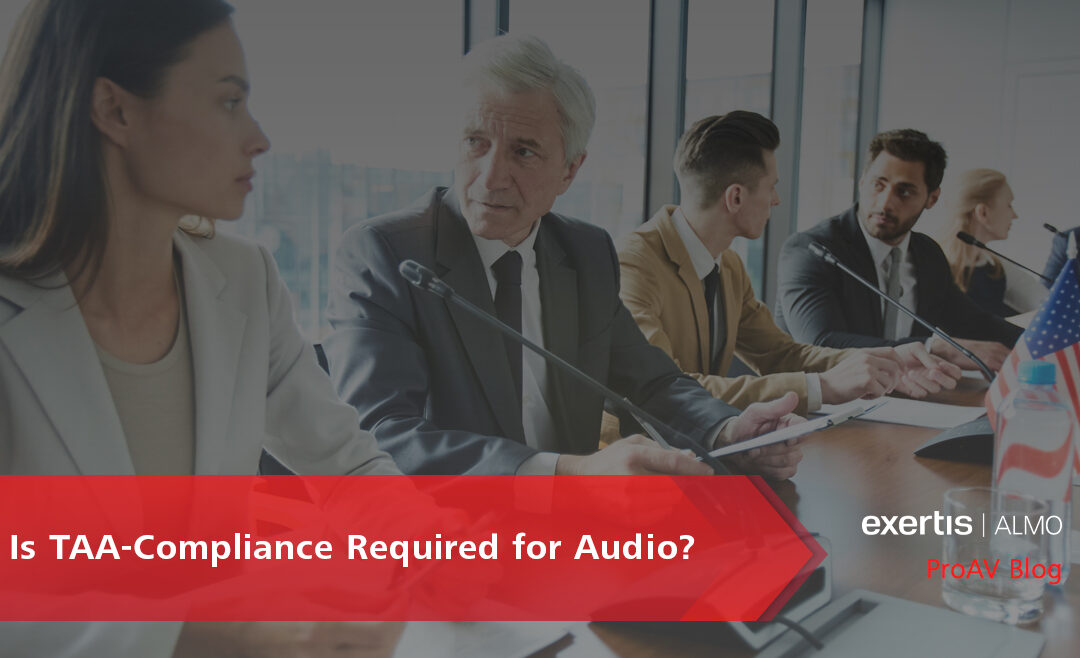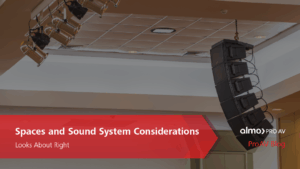Let’s explore the details and nuances of TAA compliance in the context of audio equipment.
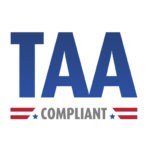 First, what is TAA compliance?
First, what is TAA compliance?
As defined by the Government Services Administration, Trade Agreement Act (TAA) Compliance refers to certain requirements and guidelines that products must meet when operating within United States government applications. The GSA notes that products may fit into two categories to be considered TAA Compliant:
- Articles that are wholly the growth, product, or manufacturer of the U.S. or a designated country.
- Articles that are “substantially transformed” in the U.S. or a designated country into a new and different article of commerce with a name, character, or use distinct from that of the article or articles from which it was transformed.
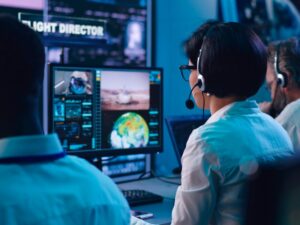 If you are looking to learn more, you can find the full details here.
If you are looking to learn more, you can find the full details here.
In a conversation with Tom Kehr, Exertis Almo Systems Designer and Trainer, he provides insight into the uses, trends, and requirements of TAA-compliance audio products.
He explains that TAA-compliance is normally for government uses, applying to government agencies and government contractors. In fact, Tom notes that TAA-compliance is not only becoming more of a requirement in audio products, but also with the components.
“The thought process behind TAA-compliance is to mitigate issues getting products,” he said. “If current trade practices are disrupted in a certain area, it depends on whether or not they can continue their business.”
Josh Taylor, Exertis Almo Director of Pro AV Sales, and Trae Fackler, Exertis Almo Senior Account Manager, detail the popularity of TAA-compliant solutions, stating that between the end of fall and the beginning of summer, about half of the quotes are going to revolve around TAA-compliance. Additionally, they explain that TAA-compliance is typically the focus for government applications, above price and availability.
“It all depends on the end user and the end location,” Trae explained. “The dealer usually informs up upfront and states that TAA-compliance is a requirement.”
 Moreover, a key component of TAA-compliance is the idea of substantial transformation, and navigating TAA-compliance comes with challenges. Manufacturers ensure compliance through third-party validation of their products, but complexities arise due to the varying interpretations of “substantial transformation” and the origin of components. This process depends on the product and tends to be quite subjective, as independent companies can validate whether there is enough of a difference between an incoming part and a final product.
Moreover, a key component of TAA-compliance is the idea of substantial transformation, and navigating TAA-compliance comes with challenges. Manufacturers ensure compliance through third-party validation of their products, but complexities arise due to the varying interpretations of “substantial transformation” and the origin of components. This process depends on the product and tends to be quite subjective, as independent companies can validate whether there is enough of a difference between an incoming part and a final product.
While the above definitions explain that TAA-compliant products must be manufactured or substantially transformed in the U.S. or a designated country, it’s also important to understand the distinction between TAA-compliant products and TAA-certified products.
When speaking with Petro Shimonishi, Director of Product Management at Panasonic Connect North America, she provided insight into the confusion and complications that arise with TAA-compliance, explaining that the higher level of security, the more detailed the requirements. In fact, Petro explained the difference between government agencies in relation to TAA-compliant products.
“State and local governments are not required to have TAA-compliance, unless they’re funded by federal grants or funding,” she explained. “Since the terms of the funding might need to comply with federal procurement, resellers should consider state and local government applications for this reason.”
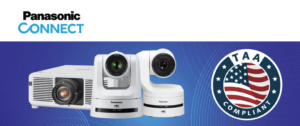 She also notes that there is a great deal of business in education applications, as most of their contracts are funded by the federal government, and there are often changes in the about of funding received. It is advisable to provide products that meet federal acquisition regulations (FAR), ensuring adherence to security, labor, and environmental standards.
She also notes that there is a great deal of business in education applications, as most of their contracts are funded by the federal government, and there are often changes in the about of funding received. It is advisable to provide products that meet federal acquisition regulations (FAR), ensuring adherence to security, labor, and environmental standards.
For those aiming to expand into government contracts, familiarity with TAA compliance is essential. And as the landscape continues to evolve, staying updated and proactive in TAA compliance will be pivotal for success in the government sector.
As far as TAA compliance for Audio products, I think it’s still something that’s evolving with time. There are only a few manufactures that offer TAA compliance for Audio products today. However, it’s most important to make sure you are sourcing your products from reputable legitimate and reputable organizations such as us, Exertis Almo. Especially to minimize any legal risk from the government from fraudulent product origination. The second key takeaway is to educate yourself and review all terms and conditions when working with state and local governments on their bid requirements. If they are utilizing federal grant monies, you could be tied to supply TAA compliance products.
If you aren’t sure about any products, please ask for the country of origin to be supplied to you.
I hope you’ve walked away with just a little bit more knowledge about TAA-compliance.
Bottom line, please reach out to your Exertis Almo Rep or myself for assistance with any of our solutions! We are here to provide you will full solutions to meet all your needs inclusive of TAA-compliance products.

Angie Greene | DSCE
Business Development Manager
Supported Manufacturers: ScreenBeam and Panasonic

